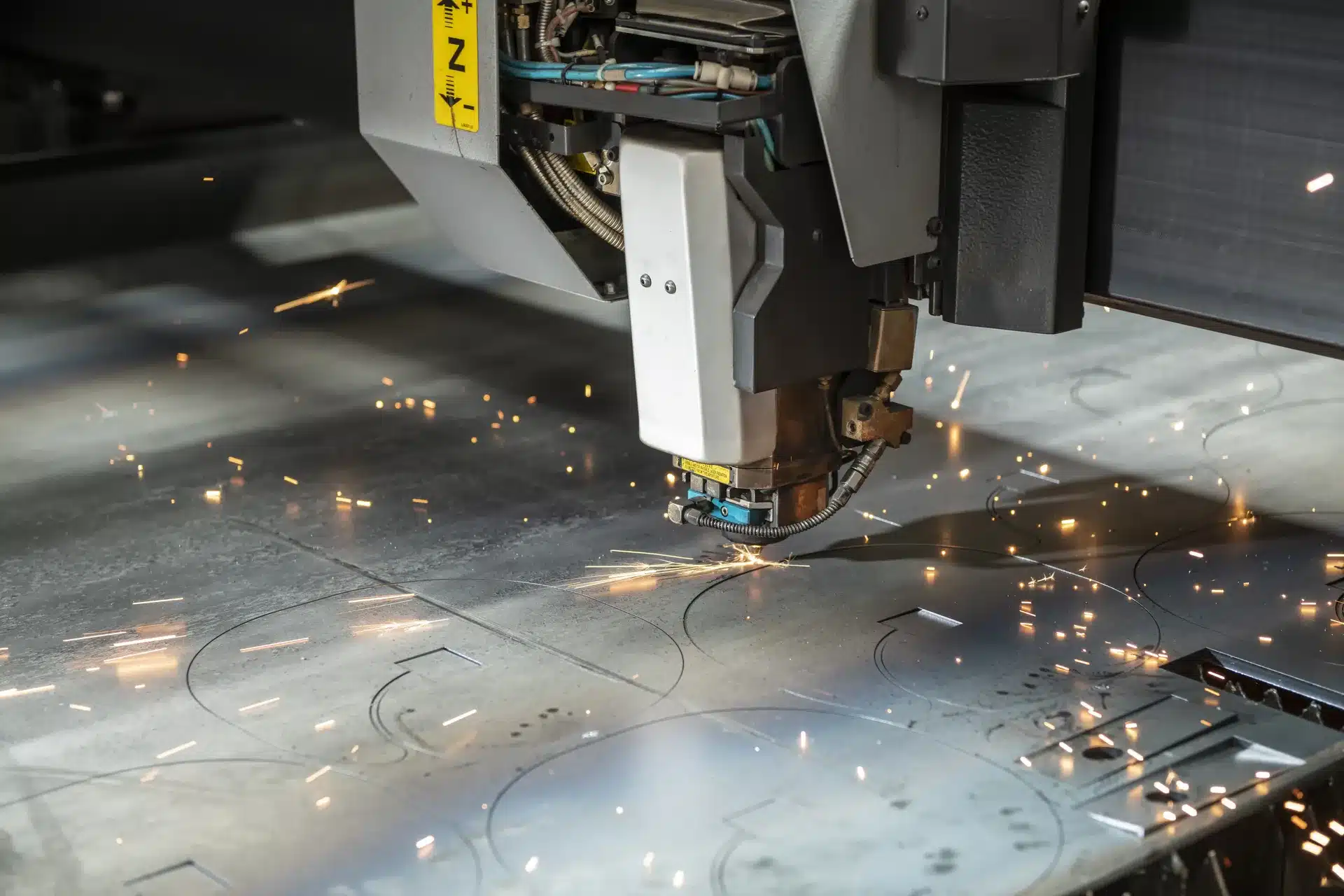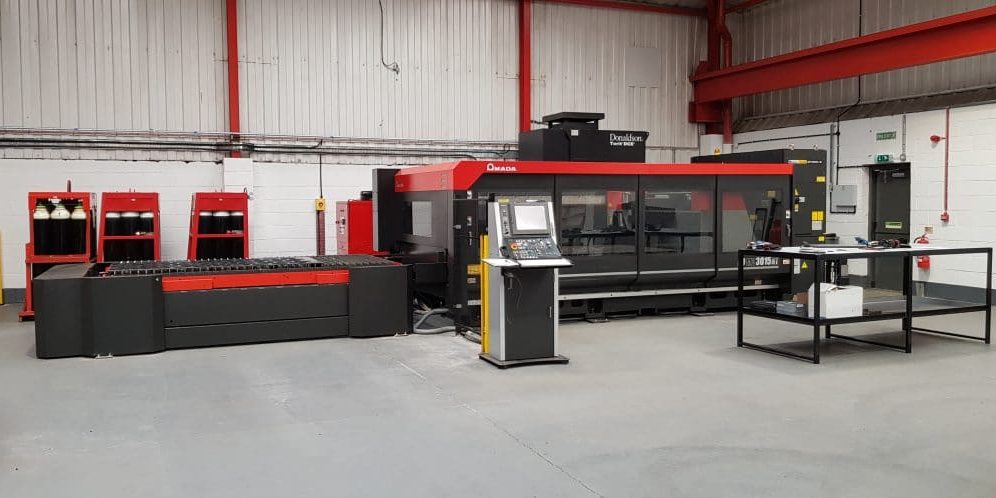What is Laser Cutting?
Laser cutting is a technological process that uses lasers to cut through materials. It is a relatively new production technique compared to many operations in the manufacturing world. The first known example of laser cutting dates back to 1965. Vastly less powerful or accurate than the modern-day equivalents.
CNC (computer numerical control) and laser optics direct the laser beam into the correct place and to create the prescribed pattern out of the material. By focusing the laser beam, the material is either melted, burnt, vaporized or is blown away by a jet of gas. The thinnest part of a focused laser is typically less than 0.3mm.
A pierce/hole must be done before each cut in order to start cutting anywhere other than the edge of the sheet. This is usually done using a very strong, pulsed beam and may take a few seconds to make the first pierce.

Advantages of Laser Cutting
There are many advantages to using laser cutting over shearing or plasma cutting including:
- Better precision – A laser beam will not wear down with usage so there won’t be an uneven or warped cutting tool being applied against the material.
- Reduced risk of contamination – There isn’t a cutting edge that has been used to make other cuts which may have been contaminated with residue from previous jobs
- More economical – The process is drastically more automated than shearing so helps to save labour costs. In comparison to plasma cutting, the capital cost is much lower, and the running expenses are also lower due to a less powerful beam being required as laser cutting is not typically used on thicker material.


